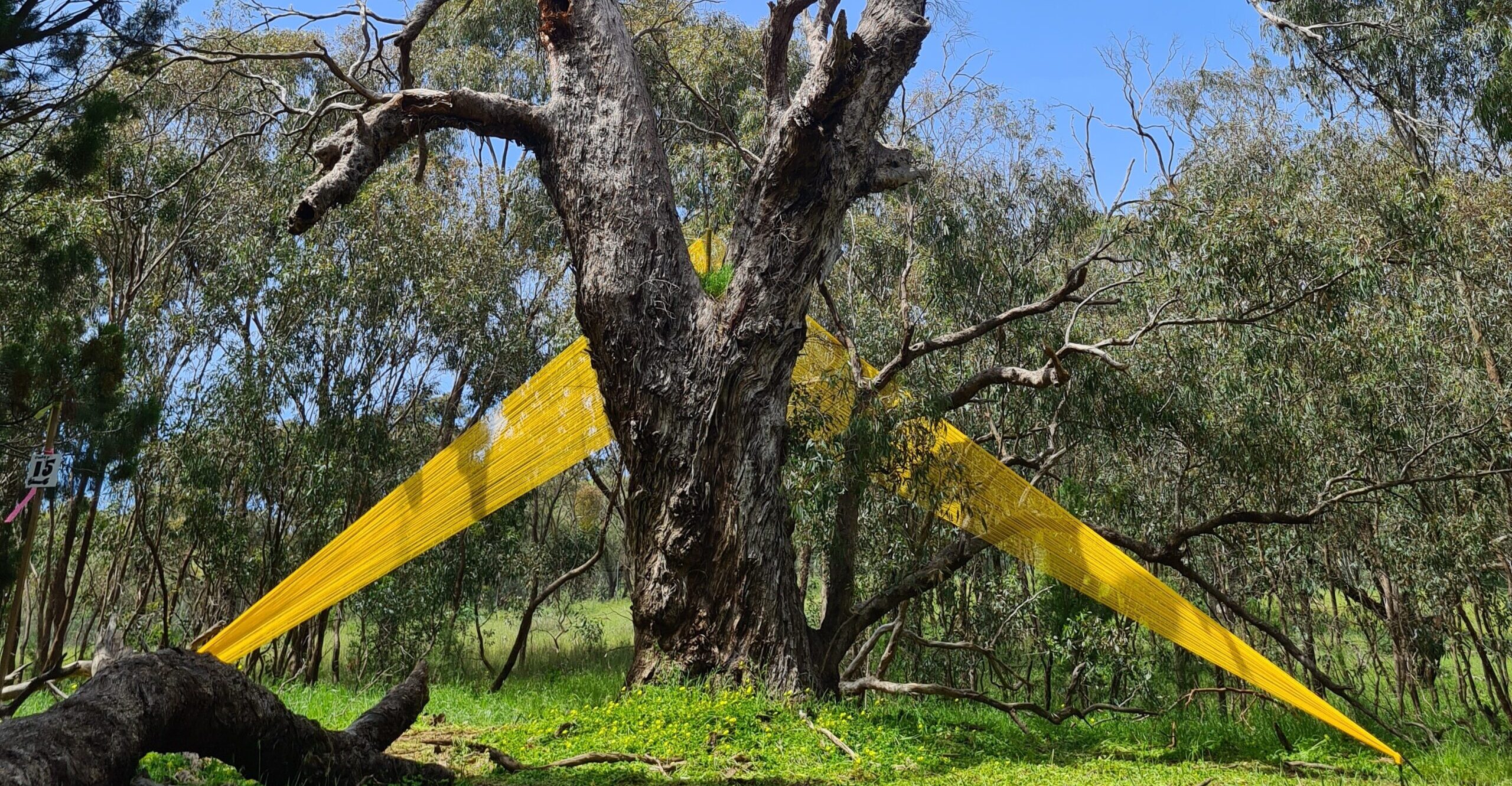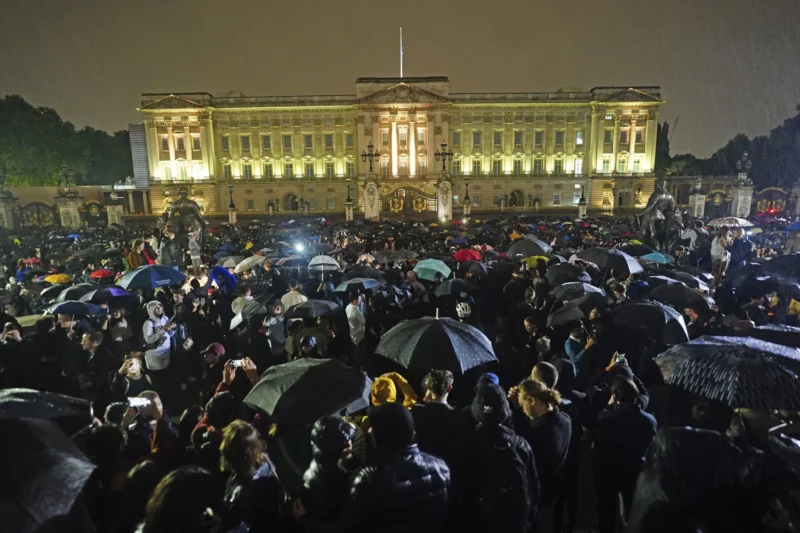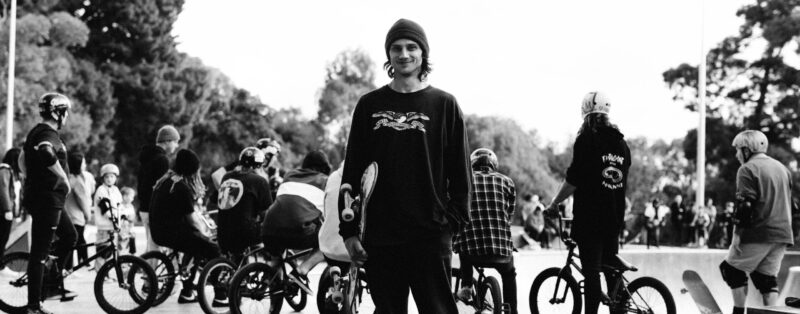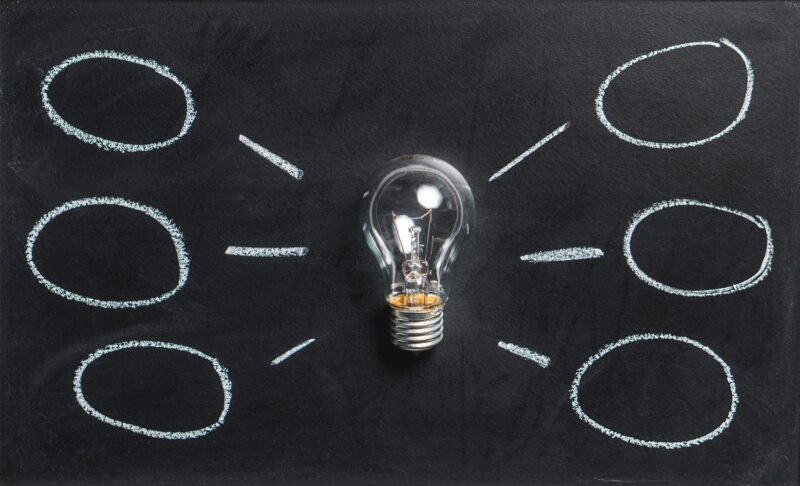Oakey is creating sculptures for both urban and natural landscapes
Oakey is an emerging contemporary artist based in Adelaide who creates sculptural and installation works. Her works combine elements found in the natural world with more traditional sculptural materials to create pieces that speak to the interconnectedness of the living world.
Born in England, Oakey spent her childhood exploring the English woodlands – with these early experiences in nature fostering a curiosity in the seen and unseen connections occurring in nature and our relationship to it. Oakey’s practice explores themes of identity, deep ecology and plant intelligence.
Her latest work, Reverence is currently on show as a part of the Heysen Sculpture Biennial, a South Australian contemporary outdoor sculpture exhibition.
Square Holes recently sat down with Oakey to chat about her processes, creating work for natural and urban landscapes and cricket vs art:
Square Holes: What themes do you explore in your art practice?
O: My work explores a deep fascination in the interconnectedness of the living world and the relationships within it. It is these connections, unseen forces, networks and spaces, on a cellular and cosmic level that I consider in the process of creating my work.
At the core is a quest to find balance, linking the tangible physical form of sculpture with the intangible feeling of the space it occupies. I enjoy playing with our perception such as creating work that seems like its reaching through a wall or wool columns that seem like they’re defying gravity. The space around and within my work is just as important as the work itself, a void of possibility and imagination and a world of invisible forces.
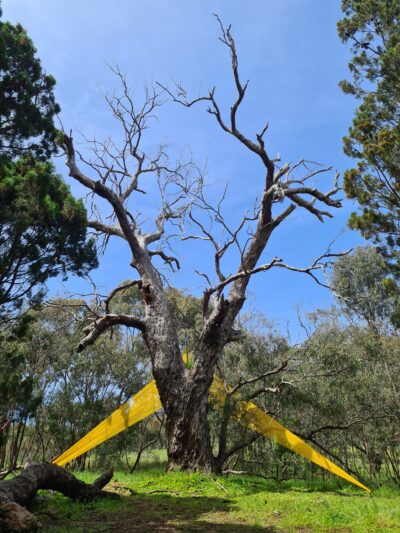
SH: You have created a number of site-specific works – including one that sits above the West End and one currently at Carrack Hill. Is there a difference in creating work for an urban space vs a natural one? And how do you go about those processes?
O: I will always start off by visiting the site, be it urban or natural, spending time to feel and observe the space around me, connecting with the land. It’s the start of a conversation between myself and the site. I view myself as a conduit, a link and representation of dialogue between the work and the site. In the urban environment I’m interested in connecting with the essence of the natural landscape that once covered the land.
It often depends on the concept but say in an urban setting I’ll look for shapes and forms in the surrounding architecture and consider how I can work with the straight lines or perhaps bring a more organic shape into the mix. Also, in the urban setting there is already plenty of human presence and I always feel urged to bring in elements of nature.
However, on the flip side, in a natural setting, I’m the human presence, and feel a responsibility to honour the space and all that resides there. For Reverence, currently being exhibited in the Heysen Sculpture Biennial, I spent hours up there working out how I could create a strong work that didn’t impact the environment too much physically, but still had a presence. I created the steel base and support at the studio so the work wouldn’t directly affect the giant gum tree. I knew I wanted to install the work on site and embraced spending the 3 days it took to create. I became a part of the environment and the animals just accepted that I was there which was really beautiful.
SH: What sorts of processes do you use in the construction of your work?
O: After the experimentation and design stage, which is a wonderful mess of ideas, I have a very organised approach to creating the final design. Often the works are quite large and have elements that I’ll make in stages per material. At the moment I am working with wood, wool and steel but also have experience in using bronze, mold making and metal smithing.
For the skeleton of my sculptures, I use steel to create a strong, lasting structure and base. I love welding, there’s a magic to melting hard steel into liquid form and joining the forms together. The infrastructure is usually hidden within the work. I use wood joinery to bring the steel pieces together. There’s a lot of playing and experimenting with angles which is something I’ve grown to love.
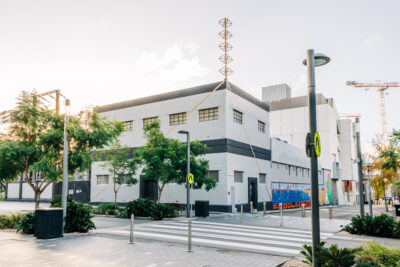
There is always a meditative aspect to my work which usually takes place during the repetitive processes of moving back and forth with wool or sanding wood. The wool element is the most time consuming and takes hours and hours of work to create tension with such a soft material.
SH: You use a lot of natural found objects in your work – what is the dialogue that you are creating between these elements and the other materials used (string ect)?
O: The start of the conversation is with the land during my walks in the bush. It is important to me to connect with the land and ask permission to collect any objects. Sometimes there’ll be a strong sense that collecting something isn’t the right thing to do and I always listen to this.
Ever present is the feeling and search for balance from the materials and space around them. A tension between the grounding of the earth and the lightness of the ethereal. There’s a sense I’m trying to find that place in the middle where they meet. I use the materials to do this beside natural forces. I view the materials as heavy or light or hard or soft. And in their different forms they can be all of these things.
SH: You were also a pro cricketer – are there any parallels between your sports practice and your arts practice?
O: I am beginning to realise that there are many transferable skills between the two!
One of the most obvious ones is the physicality of both practices. I tend to make large sculptures and its very physical work. My body awareness though cricket training helps me every day by making sure I’m lifting something heavy in the right position or if I’m doing something repetitive that I’m doing it in a safe way. Both practices involve repetition and making sure the body is in a safe ergonomic position which is essential for a sustainable practice.
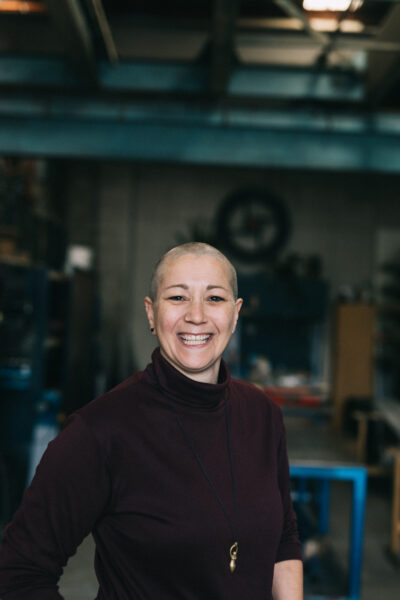
I often consider how the body moves in space in my arts practice and how the audience feels and moves around a sculpture or installation. Again, this comes back to body awareness which is essential to cricket. We would do drills over and over again making sure our body was in the right position. Say a forward drive, a beautiful, flowing shot when you time it just right. This can be broken down into elements, focusing on one detail like how high your elbow is.
The discipline from training and the mental strength to keep going when it all seems overwhelming is also similar in both fields. There’s a balance between the mental side of training/creating and the physical flow. I feel like after coaching cricket for years, I now coach myself and give myself encouragement when making art!
SH: How has the support of Helpmann Academy impacted your practice?
O: The Helpmann Academy have been instrumental in my practice evolving to where I am now. Having had Helpmann funded studio spaces at ACE and George St Studios, I was able to step out of university straight into a situation where I could focus on and grow my practice surrounded by plenty of support from people in the industry. My time at ACE also led me to my work as an arts installer which I learn a lot from. The public art opportunities I have been involved in for Hindley St and Goolwa have provided me with experiences to collaborate and learn more about the public art realm. Without the support of the Helpmann Academy and my space at George St, I would have found it very difficult to make the work I’m building at the moment.
SH: What’s next?
O: Next up I have a commission for a light sculpture at the Adelaide Festival Centre which I will begin work on at George St Studios soon. Next year I will be working towards a solo exhibition for Adelaide Fringe 2024 at the Hahndorf Academy, an opportunity I won through exhibiting in the Heysen Sculpture Biennial. These two projects will take up most of the year and I’m looking forward to getting the ball rolling!
You can see Reverence at the 2022 Heysen Sculpture Biennial at Carrick Hill from 23 October 2022 – 15 January 2023.
Square Holes has partnered with Helpmann Academy to provide insights through market research to evolve and fine tune its output since 2006.
